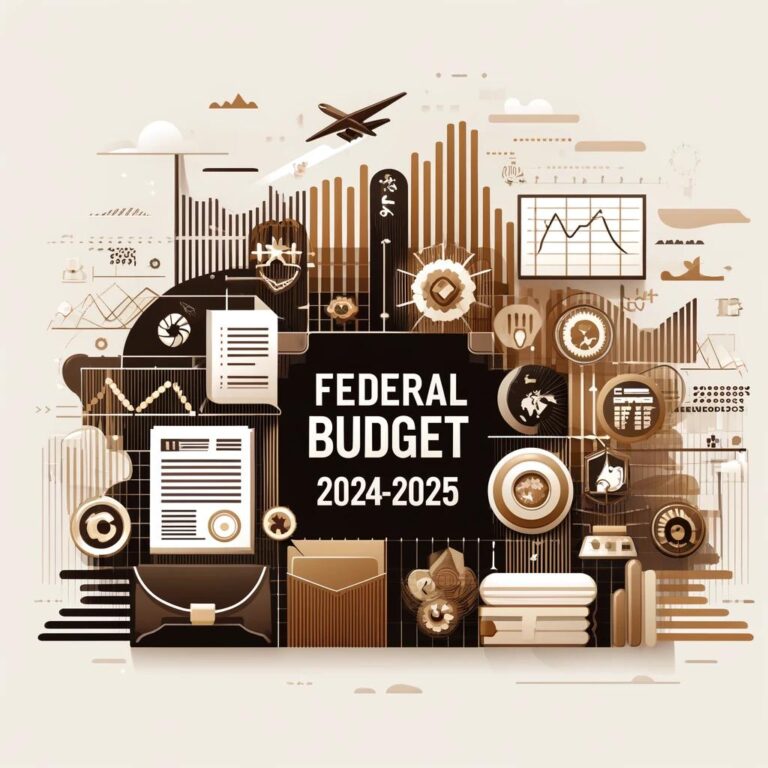Author
Calvin Augustine is the founding solicitor of Augustine & Co. Immigration Lawyers. He graduated with Honors from the University of London law school, before being admitted to practice in Malaysia and Australia (admitted in SA, appears in all Victorian Courts and Tribunals, at trial and appellate levels).
The Australian Government’s Budget 2024-2025 introduces numerous significant changes and initiatives impacting immigration law and policy. Augustine and Co. Immigration Lawyers offer a detailed and critical analysis of the budget’s key areas, examining how these changes will affect the immigration landscape. This article evaluates the budget’s implications, highlighting its strengths and areas requiring further attention.
Permanent Migration Program: Strategic Adjustments
The 2024-2025 budget sets the permanent Migration Program planning level at 185,000 places, with 132,200 places allocated to the Skill stream. This focus on skilled migration aims to attract highly qualified professionals to fill critical gaps in the labor market, fostering economic growth and innovation. However, the reduction in Skilled Independent visas from 30,375 to 16,900 suggests a cautious approach that might not fully address the critical skill shortages Australia faces.
From 2025-2026, the Government plans to extend the planning horizon for the permanent Migration Program from one year to four years. This long-term approach is expected to provide better management and stability within the migration system, enabling more strategic planning and resource allocation. The estimated reduction of net overseas migration by 110,000 people over the forward estimates indicates a more controlled and sustainable approach to migration, addressing concerns of overpopulation and resource strain.
Critical Analysis of Permanent Visa Allocations
The allocation for permanent visa places for 2024-2025 provides detailed planning levels for each visa category, reflecting a strategic focus on skill and regional migration. While the increase in Employer Sponsored visas from 36,825 to 44,000 is a positive step, the significant reduction in Skilled Independent visas raises concerns. This category traditionally attracts highly skilled individuals who can contribute to various sectors without employer sponsorship. Limiting these visas could hinder Australia’s ability to attract a diverse range of talents, potentially impacting sectors not covered by employer sponsorship.
The decrease in Business Innovation & Investment visas from 1,900 to 1,000 also warrants scrutiny. This reduction might deter potential investors and entrepreneurs who could bring significant economic benefits. Balancing the need to control immigration numbers with the necessity to attract valuable economic contributors is crucial for maintaining a robust migration program.
Migration System Reforms: Incremental Improvements
The Government’s commitment to reforming the migration system is evident with an $18.3 million investment over four years. This funding aims to enhance the integrity and efficiency of the system, ensuring it contributes to economic prosperity. Key initiatives include:
• $15 million for information and education activities: This will provide migrant workers with crucial information about workplace safeguards and compliance measures, promoting fair treatment and reducing exploitation.
• $1.9 million for a data-matching pilot: This initiative between the Department of Home Affairs and the Australian Taxation Office aims to mitigate the exploitation of migrant workers by ensuring accurate reporting of income and employment data.
Critical Analysis of Migration Reforms
While these reforms are steps in the right direction, they might be insufficient to address the deep-rooted issues within the migration system. The information and education activities, while essential, need to be part of a broader strategy that includes stricter enforcement of labor laws and better support for migrant workers. The data-matching pilot, although innovative, requires robust implementation to ensure it effectively prevents exploitation.
Staffing and Service Delivery: Enhancements Needed
The budget highlights significant investment in staffing to rebuild service delivery capacity. The Home Affairs portfolio will increase average staffing levels from 15,411 to 15,590, enhancing the capacity to manage immigration processes effectively. This includes resources for Services Australia and the Department of Home Affairs to reduce backlogs and improve visa processing times. Enhanced staffing levels are crucial for ensuring timely and efficient service delivery, directly impacting the experiences of migrants navigating the immigration system.
Critical Analysis of Staffing and Service Delivery
While increasing staffing levels is crucial, it is not a panacea for the systemic inefficiencies within the immigration system. Past increases in staffing have not always resulted in proportional improvements in service delivery. There needs to be a focus on training and retaining skilled staff, alongside process improvements and technological upgrades to ensure the intended benefits are realized.
Southeast Asia Engagement: Promising, But Implementation Is Key
The Government has allocated $505.9 million over five years to deepen engagement with Southeast Asia, including improving visa access for ASEAN member countries and Timor-Leste. This funding includes $1.1 million over two years to provide long-validity business and frequent traveler visas, facilitating smoother and more predictable travel for business professionals.
Critical Analysis of Southeast Asia Engagement
While this initiative is promising, its success will depend heavily on effective implementation and sustained diplomatic efforts. Past engagements with Southeast Asia have faced challenges in consistency and follow-through. Ensuring that these visa programs are accessible and efficiently managed will be key to their success.
Work and Holiday Visa and Mobility Programs: Strategic Moves
New initiatives include introducing a visa pre-application ballot process for the Work and Holiday (subclass 462) visa program for China, Vietnam, and India. This measure aims to manage demand and streamline application processing times, enhancing the program’s efficiency.
Additionally, the new Mobility Arrangement for Talented Early-professionals Scheme (MATES) will offer 3,000 Indian graduates and early-career professionals a pathway to live and work in Australia for up to two years. This program targets young professionals with skills in critical fields, supporting Australia’s economic and innovation goals.
Critical Analysis of Visa Programs
While these programs are strategic, their impact will depend on the actual uptake and the ability of these young professionals to integrate into the workforce seamlessly. The introduction of a ballot process for the Work and Holiday visa program is a pragmatic move to manage demand, but it must be accompanied by transparency and fairness in the selection process.
Business and Innovation Visas: A Strategic Shift
The budget introduces the National Innovation visa, replacing the current Global Talent visa, to attract exceptionally talented migrants. Conversely, the Business Innovation and Investment visa program will cease, with refunds offered to applicants wishing to withdraw their applications.
Critical Analysis of Business and Innovation Visas
The introduction of the National Innovation visa is a strategic move to attract high-potential individuals who can drive growth in key sectors. However, the cessation of the Business Innovation and Investment visa program could deter potential investors and entrepreneurs. A balanced approach that retains elements of both programs might be more beneficial for the economy.
Temporary Skill Shortage Visa: Easing Requirements
A significant change in the Temporary Skill Shortage (subclass 482) visa reduces the work experience requirement from two years to one year. This adjustment aims to address immediate labor shortages, allowing businesses to fill critical roles more quickly.
Critical Analysis of Temporary Skill Shortage Visa
Reducing the work experience requirement is a positive step towards addressing labor shortages. However, it is crucial to maintain rigorous standards to ensure the quality of professionals entering the workforce. This change should be accompanied by robust assessment mechanisms to safeguard the integrity of the migration system.
Administrative Review Tribunal: Addressing Backlogs
The establishment of the new Administrative Review Tribunal (ART) with a $1 billion investment over five years is a notable development. The ART will replace the Administrative Appeals Tribunal (AAT), aiming to address court backlogs and improve the efficiency of migration decision reviews.
Critical Analysis of Administrative Review Tribunal
While the establishment of ART is a significant step, its success will depend on effective implementation and the ability to clear existing backlogs efficiently. Past efforts to address backlogs have often faced challenges in execution. Ensuring adequate resources and streamlined processes will be key to the ART’s success.
Settlement Services Reforms: A Mixed Bag
The budget allocates $120.9 million over five years to improve settlement services for refugees and migrants. This includes funding for the Humanitarian Settlement Program, targeted support for refugee and migrant youth, and specialized support for women experiencing domestic violence. Extending access to Medicare for Ukrainians and their immediate family members on Bridging visa E until 2027 is also a positive step toward supporting vulnerable populations.
Critical Analysis of Settlement Services
While these measures are commendable, their success depends on effective implementation and accessibility. Past efforts to improve settlement services have often been hindered by bureaucratic challenges and inadequate outreach. Ensuring these programs are well-funded and efficiently managed is crucial for their success.
Support for Individuals Affected by the Hamas-Israel Conflict: Humanitarian Commitment
The budget provides $2.9 million over two years to support individuals from significantly affected areas of Israel and the Occupied Palestinian Territories. This includes emergency financial assistance and extended Medicare eligibility, demonstrating Australia’s commitment to humanitarian support.
Critical Analysis of Humanitarian Support
This initiative reflects Australia’s commitment to humanitarian aid, but its effectiveness will depend on timely and efficient delivery of support. Ensuring that affected individuals are aware of and can access these resources is crucial.
Cyber Security and ICT Improvements: Necessary Investments
Investments in cyber security and a modern ICT solution for Trades Recognition Australia reflect the Government’s commitment to protecting critical infrastructure and supporting skilled migration. These measures aim to enhance the efficiency and security of the migration system, benefiting both migrants and employers.
Critical Analysis of Cyber Security and ICT Investments
While these investments are necessary, the success of these initiatives will depend on addressing the existing skill shortages in the tech sector. Ensuring that there are enough skilled professionals to implement and manage these systems is crucial for their success.
Empowering Migrant and Refugee Women: Positive Steps
The Government will provide $15 million over three years for information and education activities to empower migrant women, particularly those in insecure work, by providing them with information on workplace safeguards and compliance measures. Additionally, $3.8 million will be allocated over four years to continue conversational English classes in Community Hubs, removing barriers for migrant women by offering on-site childminding facilities.
Critical Analysis of Empowering Migrant Women
These measures are positive steps, but continuous monitoring and evaluation are necessary to ensure they effectively address exploitation and provide the necessary support. Past initiatives have sometimes fallen short due to inadequate follow-through and support mechanisms. Ensuring these programs are well-publicized and accessible is key to their success.
Promoting TAFE and VET Pathways: Addressing Skill Shortages
The Government will provide $4.4 million in 2024-2025 to drive demand for Vocational Education and Training (VET). This initiative aims to increase the proportion of skilled workers in Australia by delivering strategic communications to promote VET and extending community awareness of Fee-Free TAFE courses in areas of high skills needs.
Critical Analysis of TAFE and VET Pathways
While promoting VET and TAFE pathways is essential for addressing long-term skill shortages, the immediate impact may be limited. The current skill shortages require rapid solutions, and while these educational initiatives are necessary, they must be complemented by short-term strategies to fill critical gaps.
Conclusion: A Mixed Bag
The Budget 2024-2025 presents a comprehensive plan with significant implications for immigration law and policy. While the Government’s initiatives to attract skilled migrants, improve service delivery, and enhance settlement services are commendable, critical scrutiny reveals areas requiring further attention. Effective implementation, transparent communication, and continued reform are essential to ensure that these measures achieve their intended goals and support Australia’s economic and social prosperity.
Augustine and Co Immigration Lawyers remain committed to providing expert legal advice and support to navigate the complexities of Australia’s evolving immigration policies.




